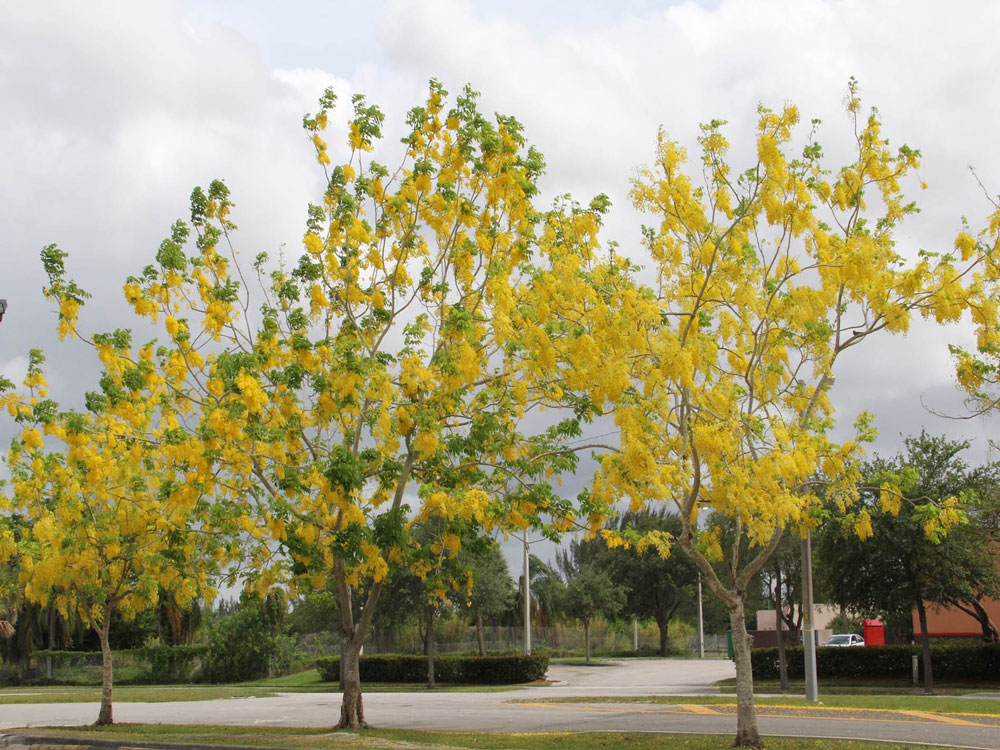Amaltas - Indian Laburnum Tree

Cassia fistula
Summary
Scientific Classification
Kingdom: Plantae
Division: Magnoliophyta
Class: Magnoliopsida
Order: Fabales
Family: Fabaceae
Genus: Cassia
Species: C.fistula
Scientific Name: Cassia fistula L.
Common Names:
English: Garmalo, Indian Laburnum, Golden Shower Tree, Amaltas.
Hindi: Amaltas.
Kannada: Kakke.
Marathi: Bahava.
Description:
Habit and Habitat: This native of India, commonly known as Amaltaas, is one of the most beautiful of all tropical treesA small treeit sheds its leaves and bursts into a mass of long, grape-bunches like yellow gold flowers. Aerial, erect, woody, branched, cylindrical, solid and glabrous. A tropical ornamental tree with a trunck consisting of hard reddish wood, growing up to 40 feet tall. The wood is hard and heavy; it is used for cabinet, inlay work, etc.
Distribution: The species is native to the Indian subcontinent and Southeast Asia. It ranges from eastward throughout India to Myanmar and Thailand and south to Sri Lanka and southern Pakistan.
Morphology:
Leaf: Alternate, unipinnateparipinnately compound, stipules small, leaflets 4-8 pairs, large, ovate, entire or wavy, acute, base wedge-shaped.
Inflorescence: Long drooping racemes.
Flower: Bracteate, pedicellate, complete, zygomorphic, bisexual, yellow. Calyx made up of 5 sepals, divided to the base, imbricate, oblong. Corolla made up of 5 petals, clawed, obovate, veined.It has showy racemes, up to 2” long, with bright, yellow, fragrant flowers. These flowers are attractive to bees and butterflies.
Androecium: Stamens 10, the 3 longest stamens are much curled and bear large, oblong, much curled anthers, the 4 median stamens are straight and the 3 remaining are very short and erect, staminodes.
Gynoecium: it has Ovary free at the bottom of the calyx, superior, monocarpellary, unilocular, ovules many, marginal placentation.
Fruit: A legume, long, cylindric, pendulous, indehiscent.
Seeds: seed is ovate, many, imbedded horizontally in sweet, dark-coloured pulp, separated by transverse dissepiments called phragmatas.
Flowering and Fruiting Time: March-July (fruiting throughout the year).
Propagation: Through seeds.
Importance:
Used for road-side plantations because of its excellent yellow shower flower. In Ayurvedic medicine, the golden shower tree is known as aragvadha, meaning “disease killer”. The fruit pulp is considered a purgative, and self-medication. Wood is used for agricultural implements. The bark is used for tanning and dyeing. The pulp of the fruit furnishes an excellent and safe purgative, useful in chest and heart diseases.
Location: in front of New Building.
 Trees of GSS Project supported by Makerspace Belgaum Website concept and designe by
Trees of GSS Project supported by Makerspace Belgaum Website concept and designe by